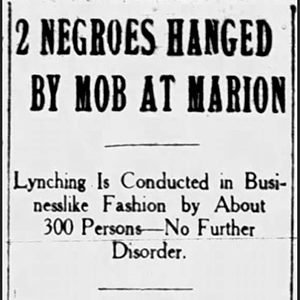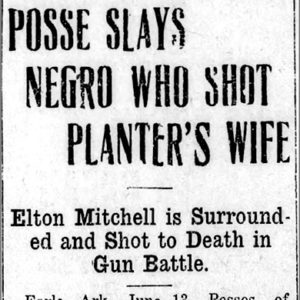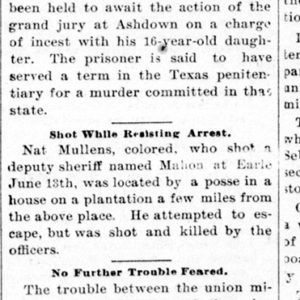County: Crittenden - Starting with M
Marion Lynching of 1910
 Marion Lynching Article
Marion Lynching Article
Memphis Tennessee to Marion, Expedition from
Memphis-Arkansas Memorial Bridge
 Memphis-Arkansas Memorial Bridge
Memphis-Arkansas Memorial Bridge
 Memphis-Arkansas Memorial Bridge
Memphis-Arkansas Memorial Bridge
Memphis-Arkansas Speedway
 Memphis-Arkansas Speedway
Memphis-Arkansas Speedway
Mitchell, Elton (Lynching of)
 Elton Mitchell Lynching Article
Elton Mitchell Lynching Article
 "Moanin' at Midnight," Performed by "Howlin' Wolf"
"Moanin' at Midnight," Performed by "Howlin' Wolf"
Mound City, Burning of
Mullens, Nat (Lynching of)
 Nat Mullens Lynching Article
Nat Mullens Lynching Article




